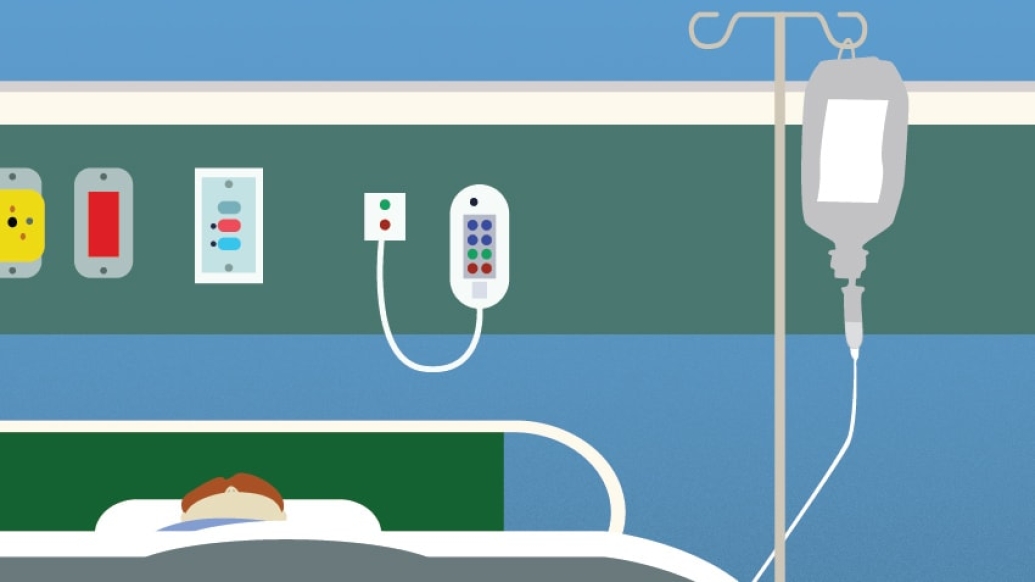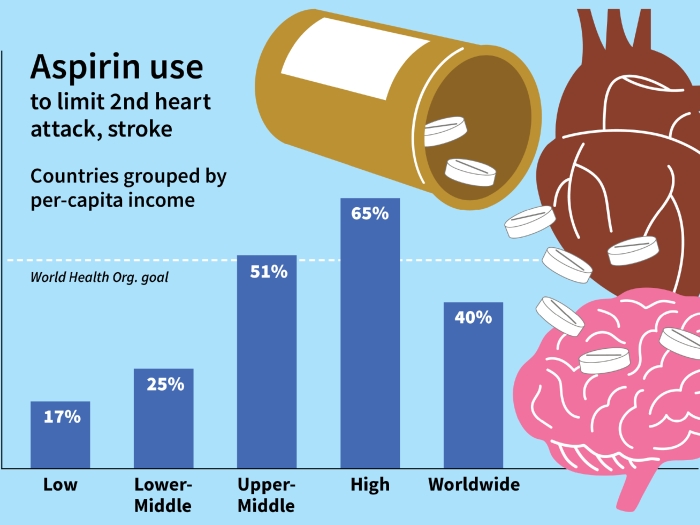Intervention in the emergency department for stroke is complicated. An emergency department physician suggests actions care teams can take to be ready.
7:00 AM
Author |

As Winston Churchill said, "I never worry about action, but only inaction."
Emergency physicians are no strangers to this idea.
ASK ALEXA: Add the Michigan Medicine News Break to Your Flash Briefing
Every day, emergency physicians across the country act to save lives and limbs. From severe trauma to cardiac arrest, and everything in between, emergency physicians proudly tackle it all, including stroke.
According to the Centers for Disease Control and Prevention, 795,000 Americans suffer strokes annually, with one stroke occurring every 40 seconds on average. Stroke remains the No. 5 overall cause of death in the U.S., and the leading cause of preventable disability — which can result in the need for long-term care and increase the risk of health care-associated infections.
As emergency physicians, we can take action to save stroke patients from a life of disability if we leverage our expertise to identify the patients who will benefit from rapid intervention. While it can seem reasonable in the face of uncertainty to not act, this can have devastating consequences for the patient.
Widespread emergency department adoption of tissue plasminogen activator (tPA), an IV-administered drug that can open a stroke patient's blocked blood vessel to stop the event, has not been without barriers. Though there have been a number of proponents advocating for more universal use, this is tempered by real concerns about the risk of symptomatic intracranial bleeding, which studies have suggested occurs in 6 percent of cases treated with IV tPA.
Physicians find themselves torn between offering patients a therapy with the potential to reverse devastating neurologic injury and the time-honored tradition of "do no harm."
A recent article in The New York Times, and research performed here in Michigan and published in Stroke, helps observe why use of tPA has been slow to take hold.
Physicians find themselves torn between offering patients a therapy with the potential to reverse devastating neurologic injury and the time-honored tradition of 'do no harm.'Brad Uren, M.D.
What stops tPA use
In The New York Times article, my fellow Michigan College of Emergency Physicians member Christopher Lewandowski, M.D., an emergency physician at Henry Ford Hospital and expert on stroke care, spoke about the issue.
After the article, Lewandowski told me he has received a tremendous number of emails and letters from the public, patients and family members, expressing their wish that their loved one, now severely disabled because of stroke, had had the opportunity to receive a treatment that might have given them a chance at a better outcome.
MORE FROM THE LAB: Subscribe to our weekly newsletter
But there are a number of factors that may make intervention in the emergency department complicated when it comes to stroke. It can be difficult to determine the precise time of onset, which is critically important in many treatments.
There is a list of inclusion and exclusion criteria to consider for stroke treatment to help us determine the proper patient who is most likely to benefit from tPA. These requirements can be a particular challenge in a time-pressured emergency department, especially when the emergency physician may be the only physician making the determination. The use of tPA is, of course, not without risk. Experts at stroke centers are experienced in selecting the proper patient most likely to benefit from tPA, or other therapy, and help identify those at higher risk for intracranial bleeding.
And it is perhaps not surprising that care teams in smaller hospitals, seeing tPA candidates rather infrequently, may report less confidence in using tPA.
The use of thrombolytics does require a certain comfort with the process, and the inclusion and exclusion criteria. It can be difficult to maintain proficiency if few opportunities are available to us.
But the Stroke trial demonstrated that emergency physicians across Michigan were much more comfortable using tPA if they were able to consult with an expert in neurologic care, even by telephone, to best identify the patients who would benefit.
Lewandowski explains that despite the availability of advanced treatment modalities like endovascular procedures, the use of IV tPA within four and a half hours is still the worldwide standard of care for the majority of strokes.
"This is certainly not beyond the scope of the emergency physician," he says.
Expert help is available
If a patient presents with symptoms of stroke, there are several options available to assist in the identification process and determine if the patient is a candidate for tPA. Not all patients are candidates for tPA and even less may qualify for endovascular intervention. But our patients count on us as emergency physicians to quickly evaluate and treat them while keeping their best interests in mind.
SEE ALSO: A SMARTer Way to Discover New Stroke Treatments
Lewandowski recommends building systems of care within your own hospital, and beyond, to address the needs of patients with stroke. Much like trauma systems, these referral arrangements, and networks of stroke experts across the state, can help physicians even in the smallest of facilities to provide excellent team-based care.
Fortunately, the state of Michigan has a number of telemedicine options to assist with stroke evaluation. These telestroke programs operate from a number of Comprehensive Stroke Centers and can rapidly put emergency care providers in contact with an expert in stroke care. After a short consultation, these experts can help you determine if your patient is a candidate for tPA or an endovascular procedure.
Cemal Sozener, M.D., an emergency physician and the emergency medical director of the Comprehensive Stroke Program at Michigan Medicine, says consultations with experts are important.
"Treatment options for acute ischemic stroke are continually evolving, and it can be difficult for emergency physicians to stay current, as they may see strokes infrequently," Sozener says. "Rapid and early consultation with an expert at a Comprehensive Stroke Center can lead to significant improvements in a patient's neurologic outcome."
As with any emergency condition, prearranged coordination of care with your stroke referral center is critical to success when you are faced with a time-critical patient. Our patients affected by stroke will benefit tremendously when we use our training to act decisively while using the best evidence and keeping the patient's best long-term interest in mind.
Resources exist within Michigan to guide emergency physicians in the care of acute neurological injury. The Michigan Medicine Comprehensive Stroke Center is ready and willing to partner with physicians to ensure the best possible outcomes for our patients. Do not hesitate to take action for our patients. Contact a Comprehensive Stroke Center to develop your management and referral plans now to ensure you are ready to act when patients need us most.
If you are a provider and would like to consult with the Michigan Medicine Comprehensive Stroke Center, please contact M-LINE at 800-962-3555.

Explore a variety of healthcare news & stories by visiting the Health Lab home page for more articles.

Department of Communication at Michigan Medicine
Want top health & research news weekly? Sign up for Health Lab’s newsletters today!





